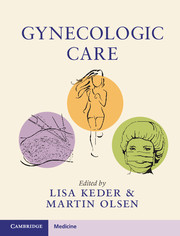Book contents
20 - Myomectomy
from Section 3 - Infertility
Published online by Cambridge University Press: 01 February 2018
Summary
Introduction
Uterine fibroids (myomas) affect nearly 80 percent of women. Risk factors for myomas include increasing age up to menopause and black race. Although not all myomas are symptomatic, many women suffer from pain, pressure symptoms, infertility, recurrent miscarriage, and abnormal uterine bleeding. Although many patients choose to undergo hysterectomy as definitive treatment for fibroids, others opt for myomectomy to preserve the uterus and fertility options. Myomas can be submucosal, intramural, or subserosal. Further classification into a numeric system 0–8 has been proposed to standardize the description of fibroid location. See Table 20.1 for specific details.
Myomectomy can be performed hysteroscopically, laparoscopically, or through a laparotomy. The indications for performing a myomectomy, how to approach the surgery, ways to optimize safety of the operation, and the risk of fibroid recurrence will be reviewed in this chapter.
Scope of the Problem
Fibroids can affect fertility in several ways. Depending on their location, they can lead to infertility, subfertility, or recurrent pregnancy loss. A meta-analysis looking at the affect of fibroids on fertility reported that women with myomas had lower pregnancy rates, less successful pregnancy implantations, and lower rates of live birth compared to infertile women with no myomas. The data analyzed in this study also showed that women with fibroids had higher spontaneous abortion rates. The authors then looked into the location of the myomas to determine which type of fibroids have the greatest impact on fertility. The meta-analysis showed that women with cavity distorting fibroids had lower rates of implantation, ongoing pregnancy and live-birth, and higher rates of spontaneous abortion compared to infertile women without myomas. The authors then looked into the effect of noncavity distorting myomas on fertility. The analysis of those women with intramural myomas showed the same negative impact on fertility as seen in women with cavity distorting fibroids. However, those women with subserosal myomas alone had no difference in any measure compared to infertile women without fibroids.
Benefits of Myomectomy
On the basis of this evidence, it would seem reasonable to offer women myomectomy for fertility improvement if their fibroids are either submucosal or intramural; the data, however, is limited and shows mixed results. A recent Cochrane Review on fertility improvement with hysteroscopic interventions found only two randomized controlled trials looking at hysteroscopic myomectomy compared with no intervention in subfertile women with submucosal myomas in situ.
- Type
- Chapter
- Information
- Gynecologic Care , pp. 191 - 198Publisher: Cambridge University PressPrint publication year: 2018



